
Practical Cisco Expressway Troubleshooting
In this 1-hour Tech Session, presented by Toby Sauer, learn the how to troubleshoot connectivity, DNS, and dialplan issues within Cisco Expressways. In many cases,
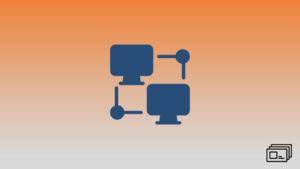
Introducing QoS, Part 3: Congestion Avoidance
These slides were used to present the Introducing QoS, Part 3: Congestion Avoidance Tech Session. (Click below to view/download these slides)
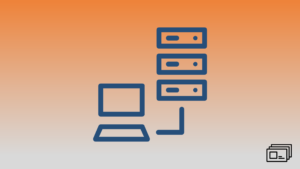
Wireless AP Operation
These slides were used to present the Wireless AP Operation Tech Session. (Click below to view/download these slides)

Collapsed Core LAN Design
This video breaks down the different layers of a Collapsed Core LAN Design including Core/Distribution and Access Layers. This video is a small portion of
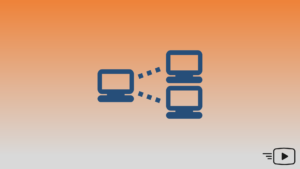
LAN Design Considerations
This video outlines some of the important considerations involved in designing a LAN including Route vs Switch, Full or Collapsed Core, and Size (low, medium,
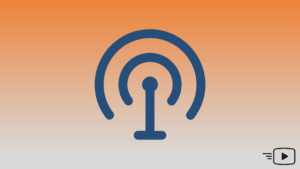
Enterprise Architecture Model
This short video provides an overview of the Enterprise Architecture Model which is comprised of the Enterprise Campus, Enterprise Edge, Service Provider Edge, and Remote
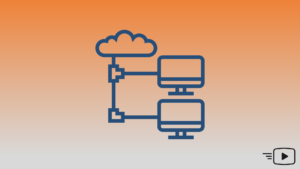
Enterprise Campus
This brief video explains the Enterprise Campus component of the Enterprise Architecture Model including Fixed Geographic Area, Two- or Three-Tiers, and Services. This video is
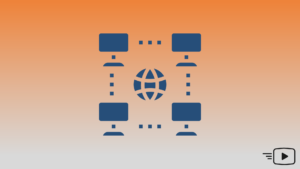
Enterprise Edge
This brief video explains the Enterprise Edge component of the Enterprise Architecture Model including WAN Connection and VPN Services. This video is a small portion
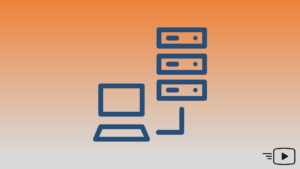
Introduction to Network Design
This video provides an Introduction to Network Design and answers the questions, “Why Modules?” and “Why Layers?” This video is a small portion of the

L3 Campus Design
This short video breaks down the different layers of an L3 Campus Design including Core, Distribution, and Access Layers. This video is a small portion

Designing a LAN
This short video breaks down LAN Design into its three layers: Access, Distribution, and Core, as well as considerations that need to be taken into

Modified L2 Campus Design
This brief video breaks down the different layers of a Modified L2 Campus Design including Core, Distribution, and Access Layers. This video is a small

Remote Locations
This brief video explains the Remote Location component of the Enterprise Architecture Model including concepts like SOHO, Branch, and Cloud Services. This video is a

Service Provider Edge
This brief video explains the Service Provider Edge component of the Enterprise Architecture Model including SLAs. This video is a small portion of the Cisco

Software Defined Access Design
This brief video shows how you can monitor your various fabrics using DNA Center including Physical Underlay and Virtual Overlay. This video is a small

Traditional L2 Campus Design
This short video breaks down the different layers of a Traditional L2 Campus Design including Core, Distribution, and Access Layers. This video is a small

Traditional LAN Design
This short video breaks down the different layers of a Traditional LAN Design including Core, Distribution, and Access Layers. This video is a small portion

Cisco Enterprise Network Architecture
These slides were used to present the Cisco Enterprise Network Architecture Tech Session. (Click below to view/download these slides)
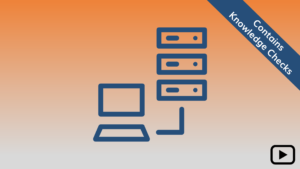
Introducing QoS, Part 3: Congestion Avoidance
In this 1-hour Tech Session, Keith Edwards discusses Weighted Random Early Detect, the default values used by WRED, both in IP Precedence and DSCP and
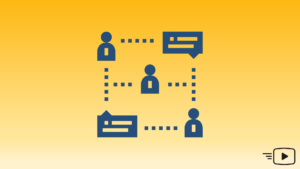
OSPF – Adjacency Process (2 of 2)
This brief video concludes the discussion of the Adjacency Process by providing a deeper dive into each step of the process from Down state to
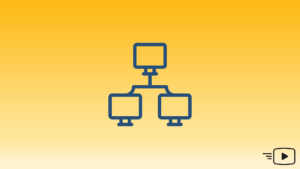
OSPF Designated Routers
This video explains the need for Designated Routers (and Backup Designated Routers) in a Shared Ethernet Segment. This video is a small portion of the
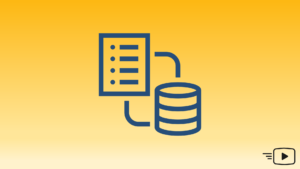
OSPF – Adjacency Process (1 of 2)
This first video (of a two-part series) explains the initial steps in the Adjacency Process from Down state to Full state. This video is a

The History of OSPF
This video provides a brief history of OSPF and how it was created based on a need for a routing protocol that could take bandwidth
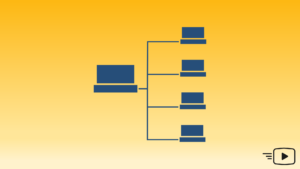
OSPF Neighbor States
This short video breaks down the various OSPF Neighbor States including Down, INIT, Two-Way, Loading, etc. This video is a small portion of the Single
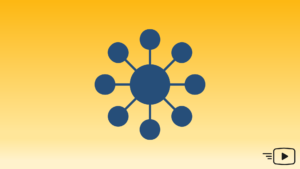
Configuring OSPF – Process/Router IDs
This short video explains how to begin configuring OSPF by assigning a Process ID and Router ID in the Global Config. This video is a

Configuring OSPF – Network Statement
This video explains how to turn on OSPF for a particular interface using a Network Statement. This video is a small portion of the Single

OSPF Areas
This brief video explains what OSPF Areas are, how they work, and the requirements associated with them. This video is a small portion of the

OSPF – Calculation of Cost
This brief video provides some background on how the OSPF Cost came to be as well as how it is calculated using Reference Bandwidth and

OSPF Hellos
This video breaks down the information found in an OSPF Hello including Router ID, Area ID, Address Mask, Authentication, and more. This video is a

OSPF – High-Level Overview
This short video provides a high-level overview of OSPF and how it works. This video is a small portion of the Single Area OSPF for

Configuring OSPF Demo
This video demonstrates how to configure OSPF including how to use various Show Commands such as show run, show ip protocols, show ip route, and
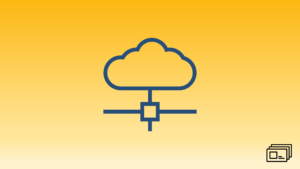
Single Area OSPF for the CCNA Exam
These slides were used to present the Single Area OSPF for the CCNA Exam Tech Session. (Click below to view/download these slides)
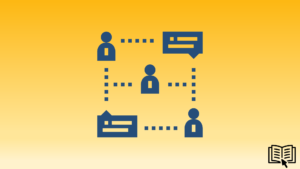
Explaining Wireless Fundamentals
This Tech Brief is derived from the Explaining Wireless Fundamentals Tech Session. (Click below to view/download this Tech Brief)
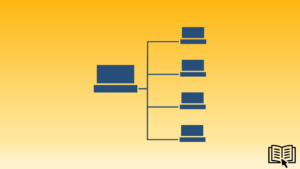
Implementing Threat Defense Technologies
This Tech Brief is derived from the Implementing Threat Defense Technologies Tech Session. (Click below to view/download this Tech Brief)
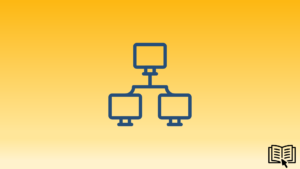
Introducing Architectures and Virtualization
This Tech Brief is derived from the Introducing Architectures and Virtualization Tech Session. (Click below to view/download this Tech Brief)
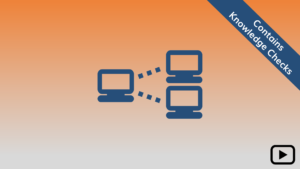
Cisco Enterprise Network Architecture
In this 1-hour Tech Session, Jim Goughenour takes a closer look at the fundamental building blocks of good network design, and answer the question about

Introducing WAN Technologies
This Tech Brief is derived from the Introducing WAN Technologies Tech Session. (Click below to view/download this Tech Brief)
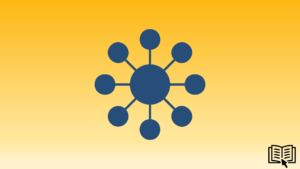
Introducing QoS
This Tech Brief is derived from the Introducing QoS Tech Session. (Click below to view/download this Tech Brief)

Exploring Layer 3 Redundancy
This Tech Brief is derived from the Exploring Layer 3 Redundancy Tech Session. (Click below to view/download this Tech Brief)
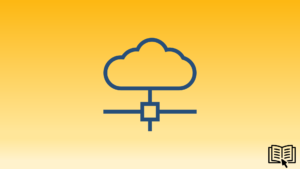
Examining the Security Threat Landscape
This Tech Brief is derived from the Examining the Security Threat Landscape Tech Session. (Click below to view/download this Tech Brief)
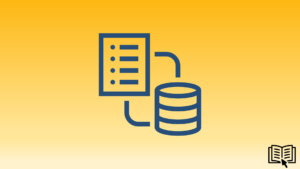
Building Redundant Switched Topologies
This Tech Brief is derived from the Building Redundant Switched Topologies Tech Session. (Click below to view/download this Tech Brief)

Cloud Based Architecture
This brief video explains how Cloud Based Architecture works including the SSID Discovery and Association/Authentication/Online processes. This video is a small portion of the Wireless

The 802.11 Ethernet Frame
This video explains the evolution of Ethernet from 802.3 to 802.11 and outlines the numerous benefits of wireless. This video is a small portion of

Autonomous Roaming
This short video explains how Autonomous Roaming works and how it differs from other types of networks such as Single and Multiple Controllers. This video

Centralized Roaming with a Single Controller
This short video explains how Centralized Roaming with a Single Controller works and how it differs from other types of networks such as Multiple Controllers

Centralized Roaming with Multiple Controllers
This video explains how Centralized Roaming with Multiple Controllers works and how it differs from other types of networks such as Single Controller and Autonomous.

Wireless AP Frequencies
This video provides a high-level understanding of the baseline architecture involved with Wireless AP Frequencies, specifically, ISM and UNII bands. This video is a small

Low Latency Queuing Example
This short video provides a helpful example of how Low Latency Queuing works. This video is a small portion of the Introducing QoS, Part 2:

Low Latency Queuing (LLQ)
This video explains what Low Latency Queuing is and provides an example of how it works. This video is a small portion of the Introducing

Priority Queuing (PQ)
This short video explains what the Priority Queuing (PQ) mechanism is and how it works. This video is a small portion of the Introducing QoS,

Queuing Strategies
This short video provides an overview of Queuing Strategies including those that are employed through routers and switches. This video is a small portion of

Round Robin (RR)
This video explains what the Round Robin (RR) technique for queuing is and how it works. This video is a small portion of the Introducing

Congestion Management Summary
This brief video provides a summary of the concepts related to Congestion Management including classification, marking, queuing techniques, class-maps, policy-maps, and more. This video is

Weighted Fair Queuing (WFQ)
This video explains what Weighted Fair Queuing (WFQ) is and how it works. This video is a small portion of the Introducing QoS, Part 2:

Class-Based Weighted Fair Queuing (CBWFQ)
This video explains what Class-Based Weighted Fair Queuing (CBWFQ) is and how it works. This video is a small portion of the Introducing QoS, Part
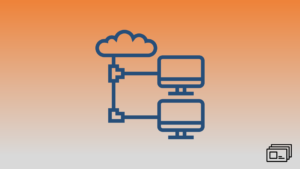
Introducing QoS, Part 2: Congestion Management
These slides were used to present the Introducing QoS, Part 2: Congestion Management Tech Session. (Click below to view/download these slides)
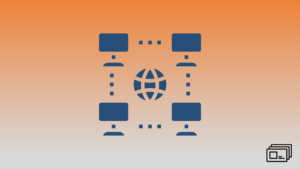
Wireless Roaming and How It Works
These slides were used to present the Wireless Roaming and How It Works Tech Session. (Click below to view/download these slides)
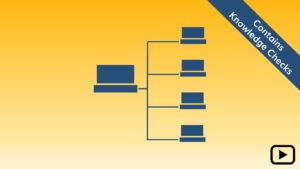
Single Area OSPF for the CCNA Exam
In this 1-hour presentation, Kenya Thomas takes a deep dive into the OSPF Link State routing protocol as needed for the CCNA exam. We cover
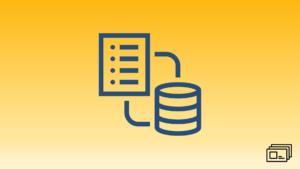
Subnetting for the CCNA Exam
These slides were used to present the Subnetting for the CCNA Exam Tech Session. (Click below to view/download these slides)

Determining the Increment (1 of 2)
This short video explains what an increment is and how to determine the increment. This video is a small portion of the Subnetting for the

Determining the Increment (2 of 2)
This short video continues the discussion of increments including examples. This video is a small portion of the Subnetting for the CCNA Exam Tech Session. Be

What is a Subnetting Increment?
This brief video explains what a Subnetting Increment is and provides an easy-to-understand demonstration. This video is a small portion of the Subnetting for the
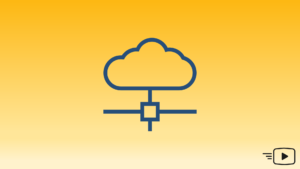
Subnetting Increment Sample Problem
This short video provides a sample Subnetting Increment question and walks you through the solution. This video is a small portion of the Subnetting for

Subnetting Examples
This short video provides three sample Subnetting questions and walks you through the solutions. This video is a small portion of the Subnetting for the

Classful Networks and Subnetting
This short video explains how Subnetting takes a classful network and splits it into multiple smaller Subnets. This video is a small portion of the

Decimal and Binary Overview
This video provides an overview of how decimals and binary work as well as how to convert decimal to binary. This video is a small

How to Calculate Subnets
This brief video walks you through the math and logic involved in calculating number of Subnets. This video is a small portion of the Subnetting

How to Calculate Hosts
This short video walks you through the math and logic involved in calculating number of Hosts. This video is a small portion of the Subnetting

Binary and IP Addressing
This video breaks down IP Addressing and discusses Binary math and Subnet Masks. This video is a small portion of the Subnetting for the CCNA

CCNA Subnetting Sample Question
This video provides a CCNA subnetting sample question and walks you through the 5 steps in coming up with the answer. This video is a

The 5 Steps to Answering a Subnetting Question
This video walks you through the 5 steps to answering a subnetting question on the CCNA exam. This video is a small portion of the

Wildcard Masking Uses: Identifying Discontiguous Networks
This video explains how Wildcard Masking can be used in identifying discontiguous networks. This video is a small portion of the Wildcard Masking in IPv4 Tech

Wildcard Masking Uses: Routing Protocols (EIGRP)
This brief video explains how Wildcard Masking can be used with Routing Protocols (EIGRP). This video is a small portion of the Wildcard Masking in

Wildcard Masking Uses: Routing Protocols (OSPF)
This brief video explains how Wildcard Masking can be used with Routing Protocols (OSPF). This video is a small portion of the Wildcard Masking in

Wildcard Masking Uses: Access Control Lists
This video explains how Wildcard Masking can be used with Access Control Lists (ACL). This video is a small portion of the Wildcard Masking in

Subnet Masking Overview
This video focuses on Subnet Masking which is important to understand prior to learning about Wildcard Masking. This video is a small portion of the

Classification and Marking Summary
This brief video provides a helpful summary of key concepts related to Classification and Marking at L2 and L3 including Policy-Maps and Service-Policies. This video

Network Based Application Recognition (NBAR)
This video explains what Network Based Application Recognition (NBAR) is and how its intelligent classification includes deep packet inspection and may be used to recognize

MQC Part Three: Service Policy
This short video talks about the Modular QoS Command-Line Interface, specifically, about Service Policies and how they are used to apply QoS policies. This video

MQC Part Two: Policy-Map and Marking
This video talks about the Modular QoS Command-Line Interface, specifically, about Policy Maps and how they are used to mark traffic. This video is a

MQC Part One: Class-Map and Classification
This video talks about the Modular QoS Command-Line Interface, specifically, about Class Maps and how they are used to classify traffic. This video is a

Marking at Layer 3
This short video talks about how Marking at Layer 3 works in the TOS byte of the IP header. This video is a small portion

Marking at Layer 2
This brief video talks about how Marking occurs at Layer 2 including where COS bits are located. This video is a small portion of the

Marking at L2 and L3 Overview
This short video provides an overview of Marking at L2 and L3. This video is a small portion of the Introducing QoS, Part 1: Classification

DSCP Shortcut IDs
This video talks about DSCP Shortcut IDs including Class Selector (CS) values, Expedited Forwarding (EF) values, and Assured Forwarding (AF) values. This video is a

Defining a QoS Policy
This short video walks you through the steps required to define a QoS Policy including identifying traffic and its requirements and configuring the network. This

Quality of Service (QoS) Overview
This video defines what Quality of Service (QoS) is and discusses the concept of Managed Unfairness and how it applies to data, voice, and video

Cisco RFC 4594
This short video discusses the Cisco RFC 4594 standard and how tools like AutoQOS use these values, by default. This video is a small portion

Understanding the Basics of Python Programming
These slides were used to present the Understanding the Basics of Python Programming Tech Session. (Click below to view/download these slides)

Exploring Automation and Assurance using DNA Center
These slides were used to present the Exploring Automation and Assurance Using DNA Center Tech Session. (Click below to view/download these slides)

Introducing Network Programmability Protocols
These slides were used to present the Introducing Network Programmability Protocols Tech Session. (Click below to view/download these slides)

Wildcard Masking in IPv4
These slides were used to present the Wildcard Masking in IPv4 Tech Session. (Click below to view/download these slides)
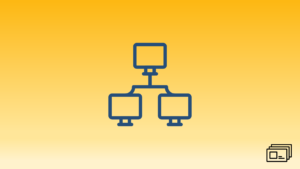
Implementing Threat Defense Technologies
These slides were used to present the Implementing Threat Defense Technologies Tech Session. (Click below to view/download these slides)
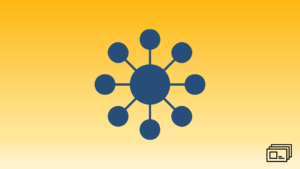
Examining the Security Threat Landscape
These slides were used to present the Examining the Security Threat Landscape Tech Session. (Click below to view/download these slides)
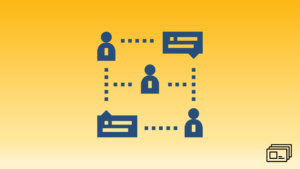
Introducing Architectures and Virtualization
These slides were used to present the Introducing Architectures and Virtualization Tech Session. (Click below to view/download these slides)

Explaining Wireless Fundamentals
These slides were used to present the Explaining Wireless Fundamentals Tech Session. (Click below to view/download these slides)

Introducing QoS
These slides were used to present the Introducing QoS Tech Session. (Click below to view/download these slides)

Introducing WAN Technologies
These slides were used to present the Introducing WAN Technologies Tech Session. (Click below to view/download these slides)

Exploring Layer 3 Redundancy
These slides were used to present the Exploring Layer 3 Redundancy Tech Session. (Click below to view/download these slides)

Building Redundant Switched Topologies
These slides were used to present the Building Redundant Switched Topologies Tech Session. (Click below to view/download these slides)
